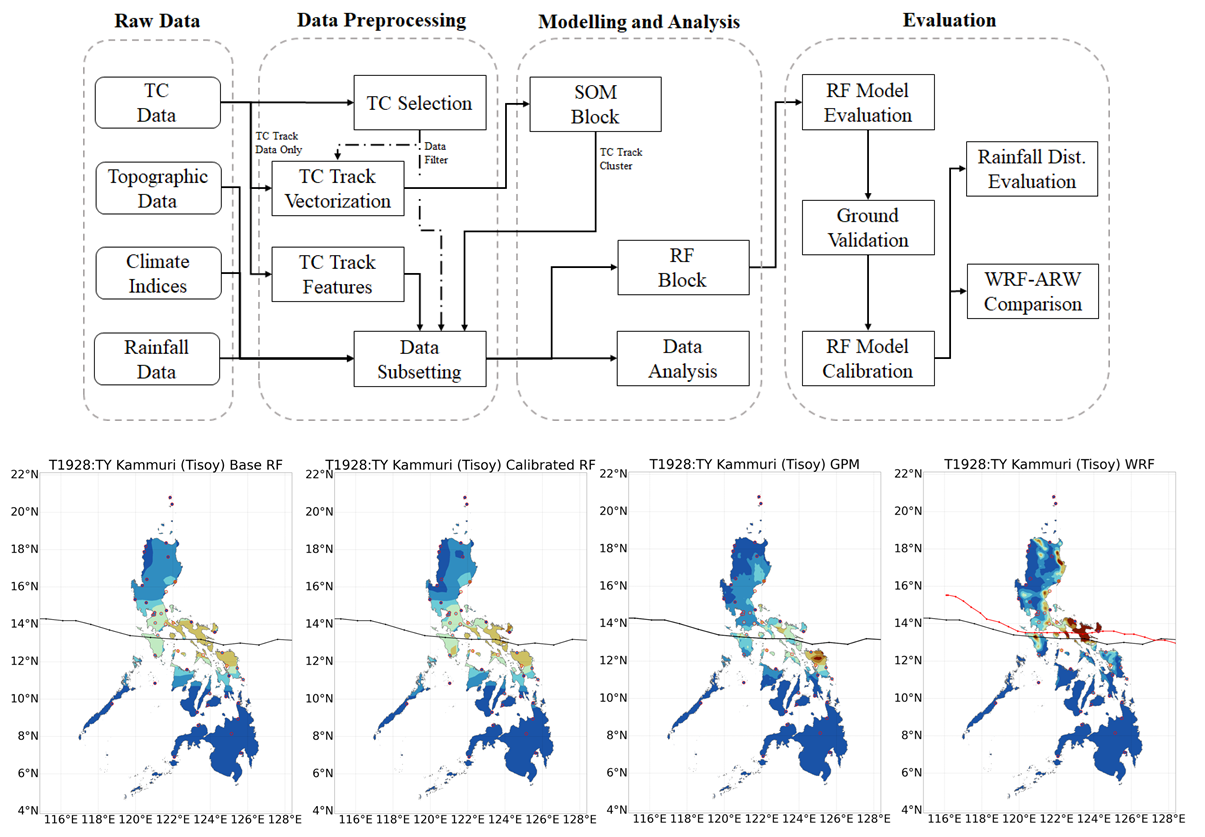
By Dean Aubrey Caratiquet
Situated within the Pacific Typhoon Belt, the Philippines is regarded as one of the most disaster-prone countries in the world, experiencing an average of 20 typhoons annually with approximately half of these making landfall and causing flash floods and landslides.
More often than not, these tropical cyclones (TCs) follow a repetitive pattern. For instance, if a typhoon with a certain amount of rainfall passes through Central Luzon, a similar typhoon that will pass through Central Luzon again in the future is likely to have the same amount and distribution of rainfall.
And with artificial intelligence (AI) steadily increasing in mainstream popularity and making its way through various industries, University of the Philippines Diliman College of Science’s Institute of Environmental Science and Meteorology (UPD-CS IESM) scientists Cris Gino Mesias and Dr. Gerry Bagtasa tapped into the potential of machine learning technology to develop an AI model that links past TC tracks to recorded rainfall.
Dr. Bagtasa said, “Most predictions of TC rainfall rely on dynamic models, which are very difficult to run as they take a lot of computational resources and require high-performance computing.”
Compared to previous models, the AI model developed by the UP scientists can run within minutes on a laptop. He added, “When we assessed the AI model, its predictive skill was comparable to a dynamic model that we regularly use. The AI model had better skills for extreme rainfall from tropical cyclones.”
Dr. Bagtasa explained that the distance of the TC and its duration are the parameters that most influenced the AI model’s rainfall predictions, and these mainly determine who will be affected by heavy rains and how much rain the country will experience.
For instance, a typhoon near Batanes would not be expected to cause heavy rains in Mindanao. Slow-moving TCs that spend more time over land also tend to bring more rainfall overall.
He noted that the model can also be updated with fresh data, allowing it to relearn and improve its accuracy, “This AI model, admittedly, is not perfect. But it can add to the suite of rainfall forecast models available to equip our disaster managers with more information on impending hazards.”
The machine learning-powered weather forecasting tool developed by Mesias and Dr. Bagtasa is different from other AI models like ChatGPT and Google’s Gemini, which are known as large language models (LLMs), thus underscoring the necessity for AI literacy.
avds
